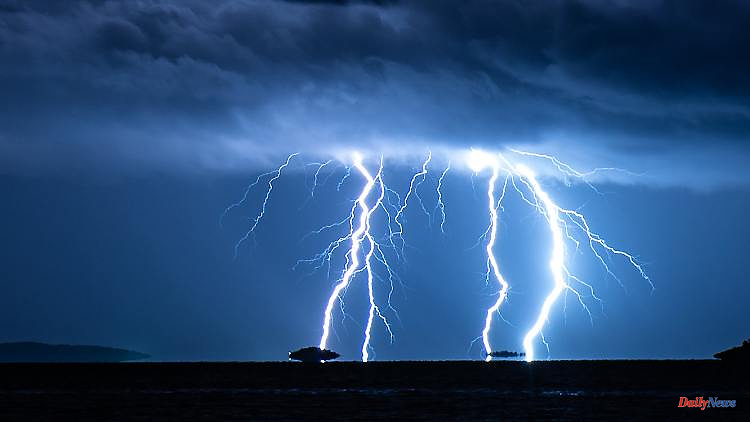Looking for beeches and avoiding pastures during thunderstorms is definitely wrong and also dangerous. But what about the rule of unplugging televisions, computers, and other expensive electronics when there's thunder and lightning? Is that just a myth too?
It used to be common practice to unplug the TV when a thunderstorm was approaching. There are now many other expensive and sensitive electronic devices in most homes, but many users do nothing to protect them from lightning strikes, believing that this is no longer necessary. Are they correct?
No not true. Since a transitional period expired at the latest at the end of 2018, overvoltage protection is mandatory in new buildings, among other things, if "equipment of overvoltage category I or II is installed in buildings", which can be assumed in every residential building. However, this is not the case with older buildings and lightning conductors are not required by law.
"Most houses do not have a lightning conductor on the roof, the so-called external lightning protection, which diverts the energy into the ground," said Harald Woelffle from ED Netze to the "Energiedienst". "If the homeowner has installed a satellite dish on the roof, the lightning will probably first hit the dish, which acts like an antenna for the lightning. Such metal objects literally attract lightning and direct it into the house installation. Then it's bad for the computers and Domestic appliances."
Level 1 are so-called lightning current arresters or overvoltage protection devices type 1 (SPD 1). They are, so to speak, the first bulwark against lightning currents that enter a building via water, data and other lines and are usually installed in front of the electricity meter. According to Allianz direct, the primary protection intercepts the entire energy content of the lightning and reduces the remaining residual voltage to less than 1300 to 6000 volts.
Type 2 surge protection devices, also known as surge arresters, are usually used in the meter box or other so-called sub-distributors. The medium protection level limits the remaining overvoltage to less than 600 to 2000 volts.
However, this remainder is still sufficient to potentially put an end to electronic devices. According to "PC Magazin", they only have to be able to withstand 500 volts in order to receive the required CE mark. According to the "Overvoltage protection" brochure from the Elektro Initiative, electronic devices have a dielectric strength of at least 1,500 volts for the power supply. This means that even with surge protection in place, it may be wise to unplug valuable electrical equipment when a thunderstorm approaches.
However, the unplugging method is of little use if nobody is at home when the storm comes. An alternative is type 3 protection devices. These are usually power strips with overvoltage protection. However, this fine protection is of little use if no level 1 and 2 overvoltage protection is available. In addition, in the case of nearby lightning strikes, higher voltages can occur than the strips can withstand, despite upstream arresters. So when you buy one, you should make sure that you can dissipate as much electricity as possible.
If you want to protect your devices, you should not only think about the power cables. Connected internet, telephone or antenna cables can also be fatal. AVM therefore expressly advises, for example, to unplug Fritz boxes and accessories or landline telephones during thunderstorms. Alternatively, Elektro recommends installing a special combined arrester for communication technology in the meter cabinet.
Photovoltaic systems, heat pumps, building system technology, etc. also require special protection against overvoltage. Information and advice on this can be found in the "Surge protection" brochure.












